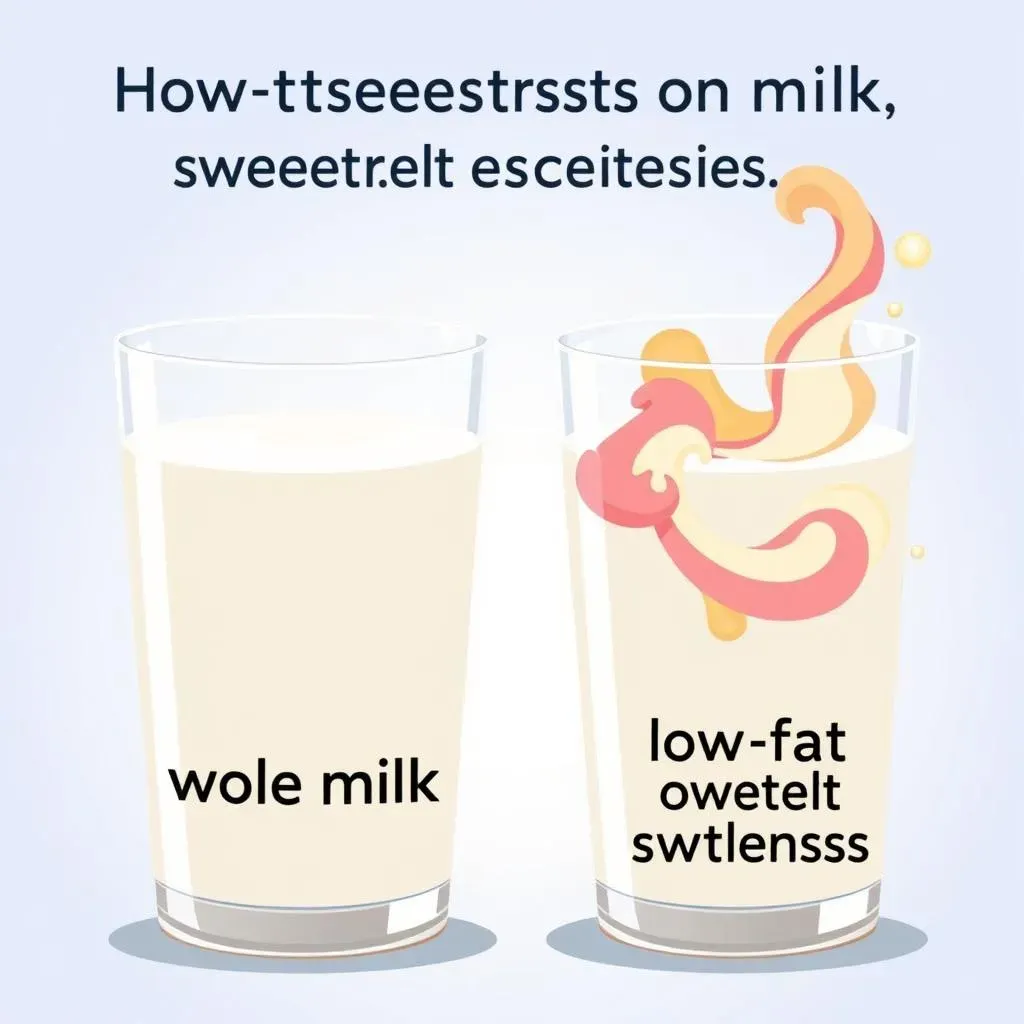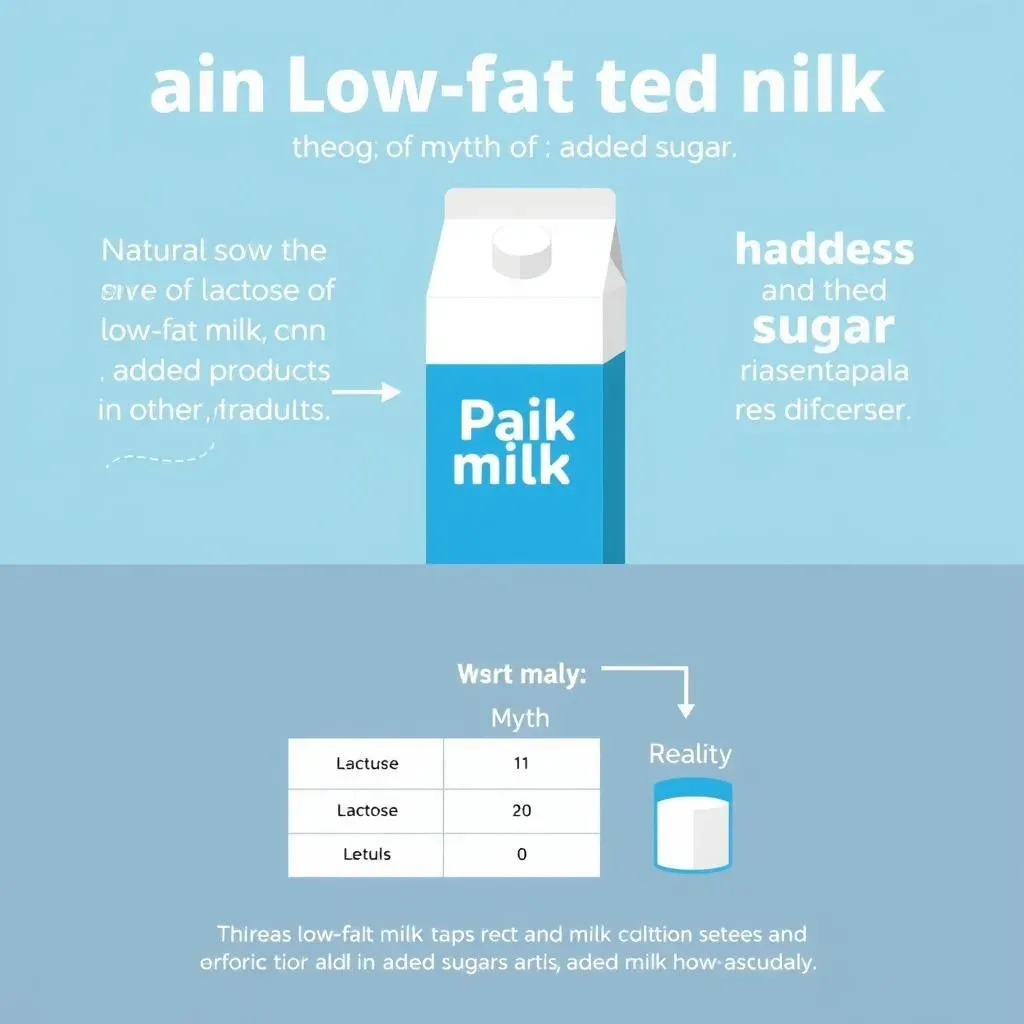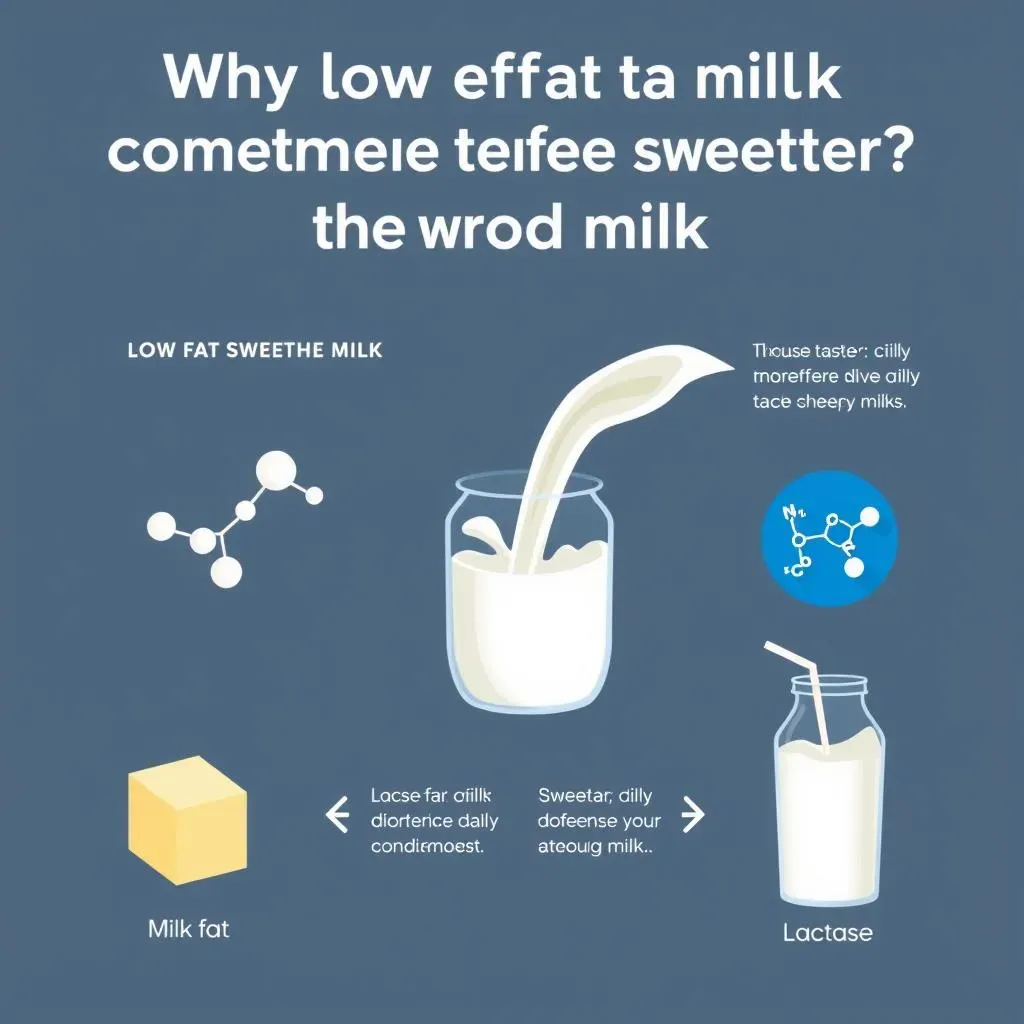Table of Contents
Ever wondered why low-fat milk sometimes tastes sweeter than the regular stuff? It's a common question, and the answer might surprise you. We often think that "low-fat" automatically means "low-sugar," but when it comes to milk, that's not quite how it works. This article is going to clear up the confusion around "why does low fat milk have more sugar," exploring the science behind milk's natural sweetness and how fat content plays a role. We'll be looking at the type of sugar found in milk, called lactose, and how it behaves differently when fat is removed. We’ll also tackle the common misconception about added sugars in low-fat milk. So, get ready to have your dairy knowledge refreshed as we break down the truth about milk, fat, and sugar. Let's get started and uncover the real reasons behind that slightly sweeter taste of low-fat milk.
Milk's Natural Sugar: Lactose Explained

Milk's Natural Sugar: Lactose Explained
What is Lactose?
Okay, so let's talk about lactose. It's the natural sugar found in milk, and it's what gives milk its slightly sweet flavor. Think of it as milk's own special brand of sugar. It's not like the sugar you'd sprinkle in your cereal; lactose is a disaccharide. That means it's made up of two smaller sugar units linked together: glucose and galactose. These are simpler sugars, but when they're joined, they form lactose, which needs to be broken down in your body to be used as energy. It's a bit like a tiny sugar puzzle that your body has to solve.
How Our Bodies Handle Lactose
Now, here's where it gets interesting. Our bodies use an enzyme called lactase to split lactose back into those simpler sugars, glucose and galactose. These can then be absorbed into the bloodstream and used for energy. However, some people don't produce enough lactase, which means they have a hard time digesting lactose. This can lead to discomfort, like bloating or tummy aches, and is what we call lactose intolerance. It's not that the lactose itself is bad; it's just that some of us don't have the right tools to process it efficiently. It’s like trying to open a lock without the right key.
Sugar Type | Description | Found In |
|---|---|---|
Lactose | A disaccharide made of glucose and galactose | Milk and dairy products |
Glucose | A simple sugar, a primary source of energy | Fruits, honey, and is part of lactose |
Galactose | A simple sugar, similar to glucose | Part of Lactose, found in dairy |
Lactose and Milk's Sweetness
Even though lactose is a sugar, it's not as intensely sweet as some other sugars. This is why milk doesn't taste super sweet, more like a mild sweetness. The interesting thing is that when you remove fat from milk, the concentration of lactose in the remaining liquid actually goes up slightly. It's not that more lactose is created; it's just that there's less volume, so the lactose becomes more concentrated. This slight increase in concentration is part of the reason why low-fat milk can taste a little sweeter compared to whole milk.
Fat Content vs. Sugar Content in Milk

Fat Content vs. Sugar Content in Milk
The Role of Fat in Milk
Okay, so we've talked about lactose, the sugar in milk. Now, let's look at the fat. Milk fat is what gives whole milk its rich, creamy texture and flavor. It's not just there for taste; fat also plays a role in how we perceive sweetness. Think about it: a spoonful of full-fat ice cream tastes less sweet than the same spoonful of low-fat ice cream. Why? Because the fat coats your taste buds, which can lessen the intensity of the sweetness. In milk, fat acts a bit like a buffer, mellowing out the lactose's sweetness. So, when you remove the fat, you're essentially removing that buffer, and the sweetness from the lactose becomes more noticeable.
How Fat Removal Affects Sugar Concentration
When milk is processed to make low-fat or skim versions, the fat is taken out, but the amount of lactose, the natural sugar, stays pretty much the same. It’s not like they’re adding more sugar in there! What happens is that you’re left with a smaller volume of liquid, but with the same amount of sugar, so it is more concentrated. It’s like having a glass of juice and then pouring out half of the liquid – the remaining juice would taste more intense. The same principle applies to milk. The reduced volume makes the lactose more concentrated, and that's why low-fat milk can taste sweeter, even though the total amount of sugar is only slightly higher than in whole milk.
Type of Milk | Approximate Fat Content | Lactose Concentration | Perceived Sweetness |
|---|---|---|---|
Whole Milk | 3.5% | Lower | Less Sweet |
Low-Fat Milk | 1-2% | Medium | Slightly Sweeter |
Skim Milk | 0.5% or less | Higher | Sweetest |
Why Does Low Fat Milk Taste Sweeter?

Why Does Low Fat Milk Taste Sweeter?
The Taste Bud Trick
So, you've got your glass of whole milk and your glass of low-fat milk, and you take a sip of each. It’s wild, right? The low-fat one just seems to have this extra zing of sweetness. It's not magic; it's all about how our taste buds perceive things. When there's fat in milk, it coats our tongue, which can actually reduce how strongly we taste the sweetness from the lactose. It's like putting a soft filter over the flavor. When you remove that fat, the sweetness is more direct and noticeable. It’s like turning up the volume on the sweetness dial.
Think of it like this: imagine you’re listening to music with a heavy blanket over the speakers. The sound is there, but it's muffled. Now, take that blanket away, and suddenly, the music is clearer and louder. The fat in whole milk is like that blanket, and when it's gone in low-fat milk, the sweetness comes through much more strongly. It's not that the low-fat milk is actually much sweeter, but the absence of fat makes it *seem* that way to your taste buds.
The Concentration Effect
Beyond how our taste buds work, there's also a concentration effect happening. When they take the fat out of milk to make low-fat or skim versions, they're not taking out any of the lactose. Instead, you end up with less volume of liquid and the same amount of sugar. It’s like making a smaller batch of lemonade using the same amount of sugar; each sip will taste sweeter. This means the lactose becomes more concentrated in the liquid, and this higher concentration translates to a more pronounced sweet taste. It’s a simple principle of physics working on your taste buds.
It's also worth noting that our perception of sweetness can be influenced by other factors, such as temperature and even how we feel. But the main reason why low-fat milk tastes sweeter is a combo of the lack of the fat buffer and the increased concentration of lactose. So, next time you sip on low-fat milk and notice that extra sweetness, you'll know it's not added sugar, but just the natural lactose being more forward without the creamy fat around!
Factor | Whole Milk | Low-Fat Milk |
|---|---|---|
Fat Content | Higher | Lower |
Taste Bud Perception | Muted sweetness | Enhanced sweetness |
Lactose Concentration | Lower | Higher |
Busting the Myth: Added Sugar in LowFat Milk

Busting the Myth: Added Sugar in LowFat Milk
The No-Sugar-Added Truth
Okay, let's get one thing straight: plain low-fat milk does *not* have added sugar. I know, it might be what you’ve heard, but it’s just not true. The sweetness you taste in low-fat milk comes from the naturally occurring lactose, as we've already discussed. Some folks think that because low-fat milk tastes sweeter, sneaky food companies must be adding extra sugar to make up for the fat they take out. But that’s not how it works. The milk processing folks are just taking the fat out; they aren’t adding any sweeteners. It’s like removing the whipped cream from your hot chocolate – it might taste a bit more intense, but it’s still the same chocolate drink.
This myth probably started because some low-fat *products*, like flavored yogurt or low-fat desserts, often do have added sugars to make them taste better. But the key thing to remember is that plain, unflavored low-fat milk is just milk with the fat taken out. It's not a science experiment with added sweeteners. So, when you're picking up a carton of low-fat milk, you can be confident that the sweetness you are experiencing is from lactose, not from added sugars.
Why the Confusion?
So, if there's no added sugar, why are people so convinced that there is? Well, it comes down to a mix of taste perception and misunderstanding. As we've explored, removing the fat changes how our taste buds detect sweetness, making the natural lactose more noticeable. This can trick our minds into thinking there's more sugar than there actually is. It's also easy to get confused because many other low-fat products *do* have added sugars. This creates a general idea that anything labeled "low-fat" must have extra sugar to make it palatable. But milk is different. It’s a naturally sweet product, and the lactose is there, no matter how much fat is in it.
Another factor is that our brains often look for simple explanations. It’s easier to think that companies are adding sugar than to understand the complex interaction between fat, lactose, and our taste buds. It’s a bit like when you see a magic trick – you might assume it's real magic, rather than understanding the illusion. The same goes for low-fat milk. It's not some trickery, it’s just the natural science of milk at work. So next time someone tells you they think there's added sugar in low-fat milk, you can be the one to set the record straight!
Myth | Reality |
|---|---|
Low-fat milk has added sugar. | Plain low-fat milk has no added sugar; sweetness comes from lactose. |
Low-fat milk is sweeter because of added sugars. | Low-fat milk tastes sweeter due to increased lactose concentration and reduced fat buffering. |
All low-fat products have added sugar. | Many low-fat products have added sugar, but plain low-fat milk does not. |
